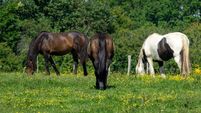Woodland census sits nature in spotlight
Then something happens to reawaken your sense of appreciation.
Glengarriff’s ancient woodlands are on my doorstep, and the dogs and I enjoy their leafy splendour every day. But sometimes, the dismal summer or other mundane preoccupations can dim even their charms.













